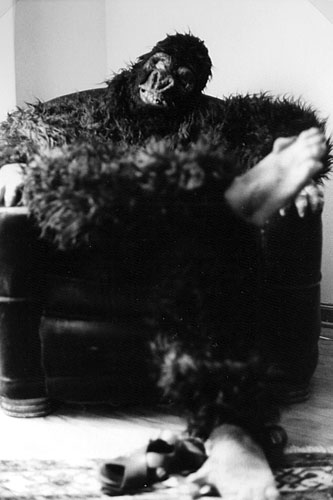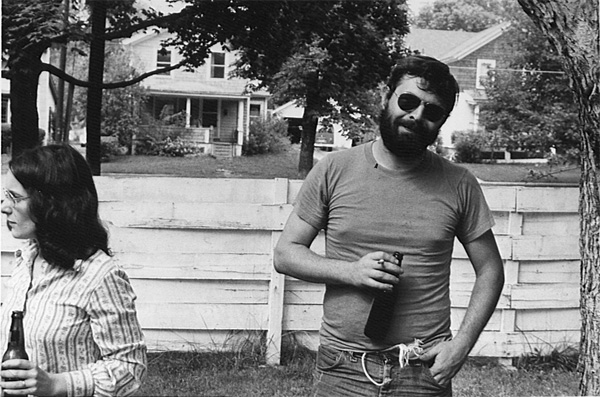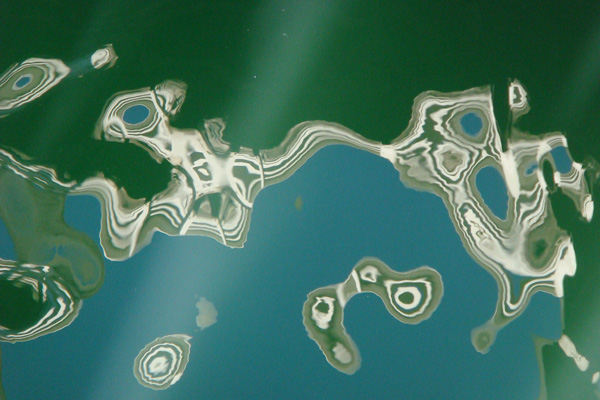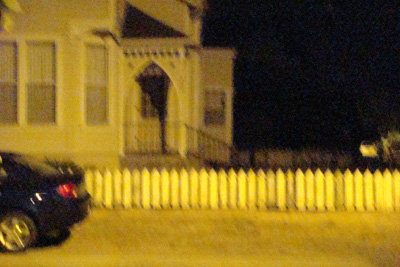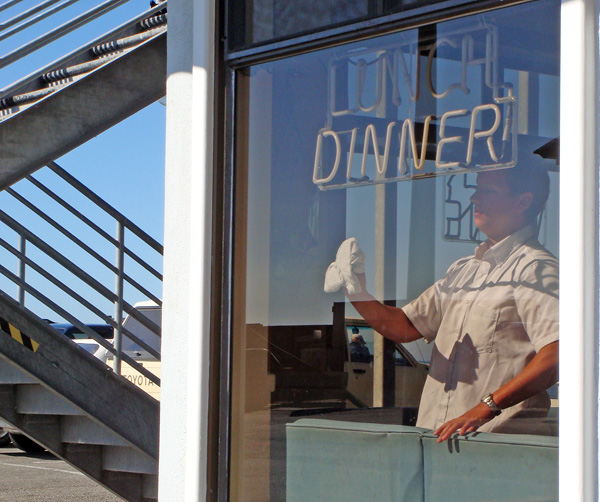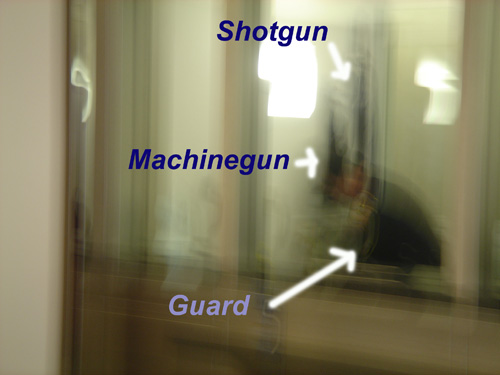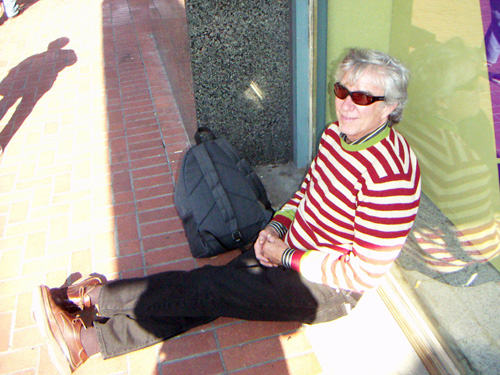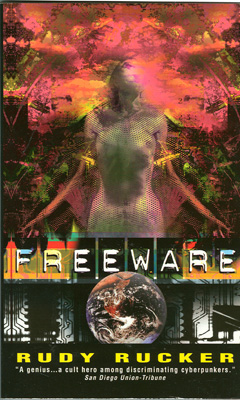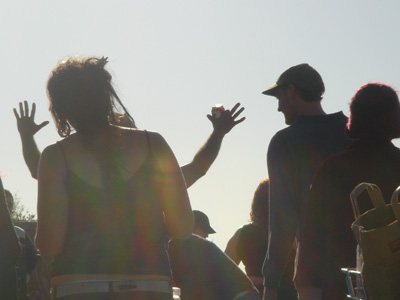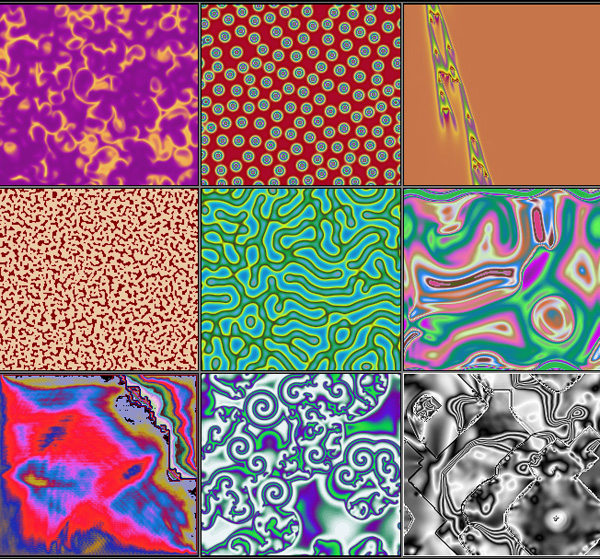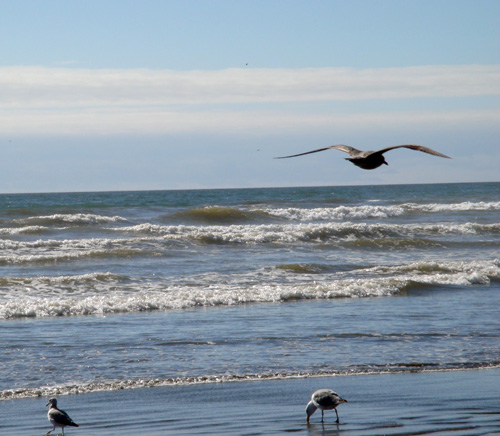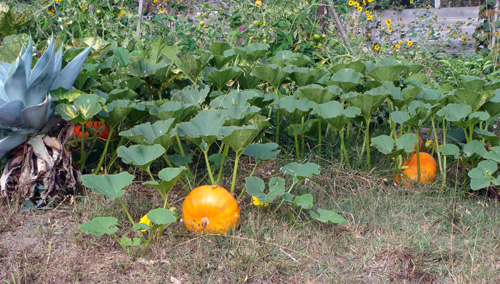
Q: What are the personalities of the harp and the pitchfork?
A: Instead of being like blinding, dull gods, the avatars are somewhat humanized: bumbling and uncertain. The pitchfork and the harp are mates: a he and a she, in love with each other.
The harp has a poor sense of direction, she’s patient and musical. She bosses the pitchfork and she nearly always thinks he’s wrong, even when he’s right. She likes to sing. She likes for the pitchfork to strum her with his tines. She has a beautiful contralto voice.
The pitchfork is pushy and physically clumsy and has difficulty reading the emotions of other beings. He’s less verbal. He likes to jab things with his tines. He loves the vibrations of the harp’s music and voice; he wriggles when he hears them. He himself speaks in a twangy Kentucky accent.
The pitchfork wants to get to ”˜s-Hertogenbosch to be near the harp. But he can’t go straight to her because his and the harp’s human-scale avatars are subject to normal physics. As long as the harp is locked up in Hieronymus Bosch’s studio, the pitchfork can’t get at her.
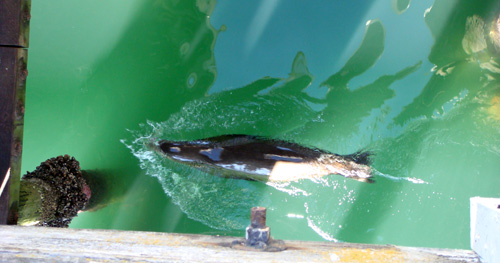
Q: Why, in general, did the pitchfork and the harp get involved with us?
A: In general, aktuals want more beings to become transfinite aktuals. The aktuals reproduce like crystals, by spreading a particular kind of spacetimescale patterning. Think of the vertical “post pile” crystals within a cooled volcano’s lava plug. Each crystal is the template for the next one.
One might say that the aktuals want all beings to have transfinite consciousness, but this would be a bit too exalted. Basically they want to reproduce.
There might well be an aktual body intersecting with some or all of a person’s life history—indeed if you become part of an aktual, this is the case. This transformation is aktualization; we use the word aktualization to refer to the process of a spacetime region linking up and down to form an aktual.
Any specific spacetimescale being can serve as a crystallization point: a seed that sends a transfinitely rapid cascade of aktualization up and down, linking the entire spectrum of levels and then, in a culminating ecstasy of unification, closing the loop from Absolute Infinity to Zero.
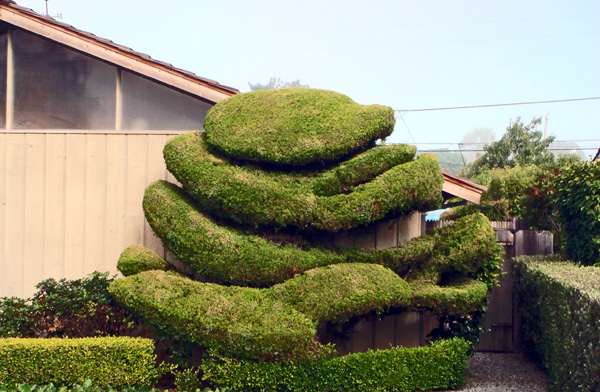
Q: How, specifically, does the pitchfork get involved with Jayjay?
A: The pitchfork appears in the Lobrane time stream shortly before Jayjay has his vision in Chapter One. He and the harp have some hope of actualizing Jayjay. They see an opportunity to work via Jayjay, as Jayjay is so high.
The pitchfork and the harp intended to incarnate themselves together, but an aktual can’t consciously control the patterning of its avatar’s worldline. The whole overall gestalt of the universe comes into play, ensuring that the patterns are consistent.
When the pitchfork appears in the Lobrane, the harp is over in the Hibrane in the medieval village of Hieronymus Bosch. The pitchfork wants to get to the harp, but he finds he’s able to aktualize Jayjay on his own.
Note that it takes the whole book for Jayjay to realize the full import of what’s happened to him in Chapter One. This is, a transreal correlative for my own process of discovering Jayjay’s altered nature via the process of writing the book.
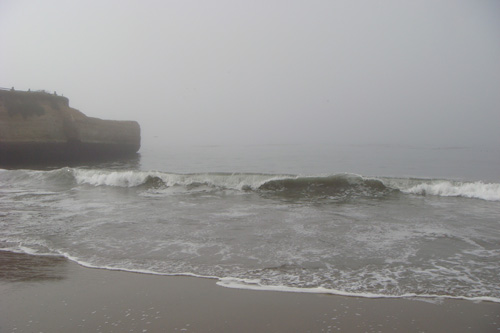
Q: What is aktualization?
A: In aktualization a helical connection arises among the scale levels. I might say that the scale connectivity is a series of gauge renormalization morphisms. In ordinary words, it works by connecting a series of looped strings of graded sizes: cutting the loops and sewing them together, each loop hooking to a next larger loop and to a next smaller loop.
To make someone an aktual, you snip his knotted loop, and attach one end to an end you get by snipping a loop at the next higher level, and attach the other free end to an end you get by snipping a loop at the next lower level.
For this to work, we need for there to be large string loops as well as little ones—think of cosmic superstrings. And iterate this, cutting further loops up and down to take care of the new free ends you keep producing.
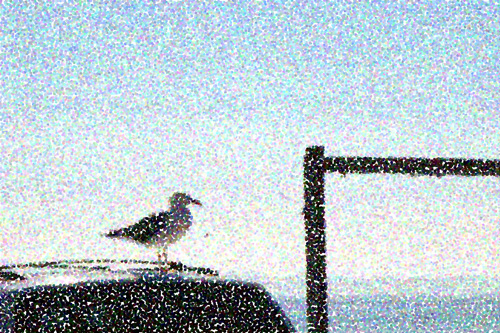
To enrich the range of string loops, we’ll also suppose that consciousness has a physical dark energy correlative of a string-loop nature. As James Clerk Maxwell wrote (if only jestingly):
My soul is an entangled knot,
Upon a liquid vortex wrought
By Intellect in the Unseen residing,
And thine doth like a convict sit,
With marlin-spike untwisting it,
Only to find its knottiness abiding;
Since all the tools for its untying
In four-dimensional space are lying.
Looking downward, when you are aktualized, your body is the same as one of your cells, that cell is the same as a particular atom, and so on. Looking upward, your body is the same as your planet, your planet is the same as your galaxy, and so on upward.
Aktual telepathy works by reaching up in scale to the mind of Gaia and dropping down from there to any other being on the planet. Also note that an aktual has access to all the mass of Earth—and up beyond— and can easily store endless amounts of data.
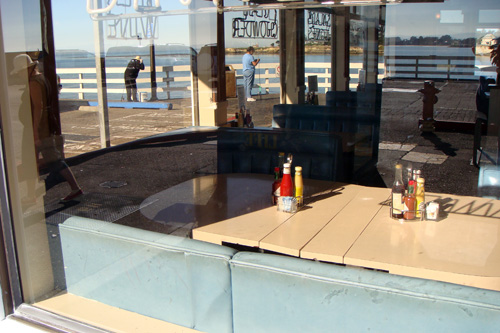
Q: How does it feel to be aktualized?
A: Jayjay’s awareness of his atomic silps is a partial step towards aktualization; and his vision of our galactic supercluster’s silp, Cronos, is an upward step.
His mind goes into a transfinite regress, like a transfinite sequence of falling dominoes.
He is Earth, the galaxy, a cell, an atom. He even feels sympathy for the subbies now. For everything to fit consistently, he has to give up a certain autonomy, a certain patterning, but he gains as well. Things shift and link.
He sees a collapsing travel cup with endlessly many cylinders being pulled up and up. The cylinders snip join, making a helix. At the end, he can see down the hollow axis of the helix to Absolute Infinity or Absolute Zero—and these two insuperable limits are the same. Like surfing down a glassy tube toward the rising sun. He feels an ecstatic sense of closure when the Absolutely Infinite scale cylinder wraps around and bites its own tail.
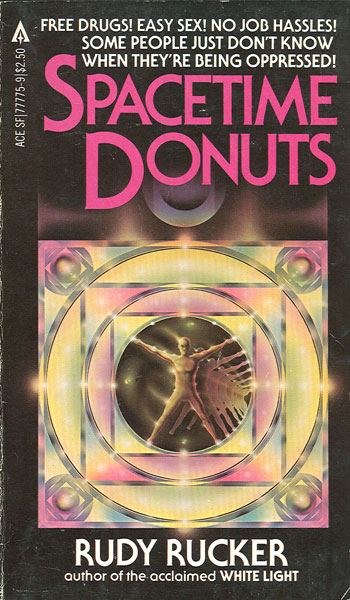
Here’s a relevant quote from my first novel, Spacetime Donuts , one of the very first cyberpunk books.
On the one hand, he moved towards Everything by letting his feeling of spatial immediacy expand from his head to include his whole body, then the tree branch and the beehive in the tree, then the garden, the city and the night sky. He expanded his time awareness as well, to include the paths of the rain drops, his last few thoughts, his childhood, the tree’s growth, and the turning of the galaxy.
On the other hand, he was also moving towards Nothing by ceasing to identify himself with any one part of space at all. He contracted his time awareness towards Nothing by letting go of more and more of his individual thoughts and sensations constantly diminishing his mental busyness.
The overall image he had of this activity was of two spheres, one expanding towards infinity, and the other contracting towards zero. The large one grew by continually doubling it size, the smaller shrank by repeatedly halving its size and they seemed to be endlessly drawing apart. But with a sudden feeling of freedom and air, Vernor had the conviction that the two spheres were on a direct collision course—that somehow the expanding and contracting spheres would meet and merge at some attainable point where Zero was Infinity, where Nothing was Everything.
—Rudy Rucker, Spacetime Donuts (Ace Books, 1981)
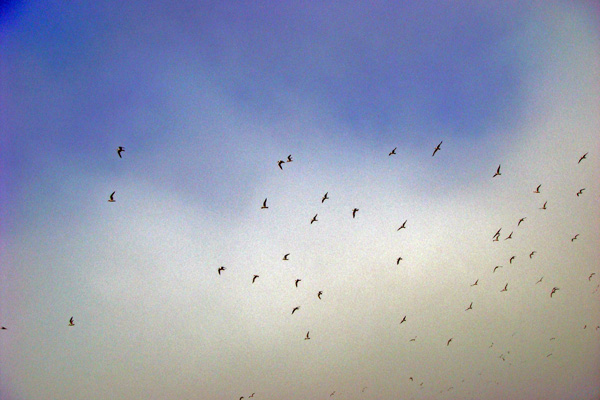
While were were in Cruz, I had a hypnagogic pre-dream while pondering this; a fabulous rush. I was on rails going out past a vanishing point; this was mixed with the sensation of being in an elevator. I had the ecstasy of transfinite acceleration: more, more, more. And then I was a flat railroad car with two antennae—that’s what my body looked like, seen from the rear. I was looking at myself from a few feet behind, seeing over my own shoulder. I glowed yellow-white against the black/dull-red night sky, a sky stippled with starships, dimensional transporters, and transfinite hoppers.









